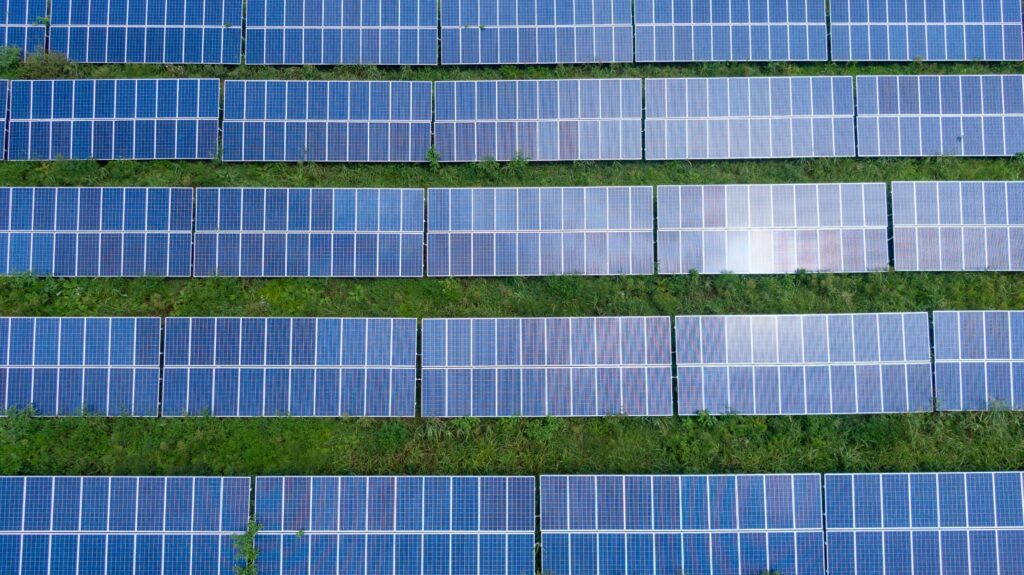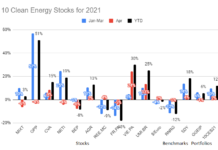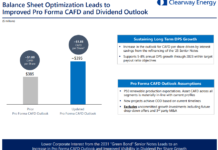By Ishaan Goel
WHY COMMUNITY SOLAR?
A home solar system is a great investment, with financial returns far in excess of any financial investment that has comparable risk. It’s also a tangible step a homeowner can take to help the environment.
Unfortunately, most New Yorkers (and Americans in general) can’t install home solar. They may be renters, or have roofs that are too old or shaded. Or they may not be able to afford the up-front cost, or not have enough income to take advantage of the tax credits.
That is why New York’s electricity regulator, the Public Service Commission, created community solar: An easy way for anyone with an electricity bill to help the solar industry and get some of the financial benefits of solar.

WHAT IS COMMUNITY SOLAR?
A community solar installation is a large scale solar farm built in a centralised location, where subscribers sign up to lease or purchase a share of the production from the solar farm as a credit on their electric bill. Subscribers receive credits on their electricity bill for the energy produced by “their” portion of the larger solar farm. They are not personally responsible for the maintenance of the farm. Community solar installations are typically 1 to 3 MW, or the size of about 150 to 800 residential solar installations. The largest can be up to 7 MW.
Community solar is authorized and incentivised by the state electricity regulator (the Public Service Commission in New York), so the details of how community solar works are different in every state. The terms offered by individual farms can also vary, especially between lease and purchase models. Although the terms offered by providers for subscription to community solar have now largely been standardised in New York, there are still individual farms with varying schemes.
HOW DOES IT WORK?
You can sign up for community solar if you are in the same utility territory as the farm itself. The community solar farm feeds the generated electricity directly into the grid, and the utility compensates the farm with bill credits for the energy that the farm generates. The solar farm uses these bill credits to pay part or all of the utility bills of its subscribers. The subscribers, in turn, pay the solar farm for the credits, usually at a discount. This allows the solar farm to turn bill credits into cash to fund its operations and repay its investors. The credits are generally monetary (a cash amount equivalent to the value of the output produced).
There are two types of models to buy into community solar – the purchase model and the subscription model. Most community solar farms use the subscription model, but people who can pay up-front and use the tax credits may find that the purchase model is an even better deal financially.
The model determines how and when you pay for the credits on your electric bill. In a subscription model, the subscriber makes monthly payments for the credits generated by the farm for their property (which is pre-set). These monthly payments are usually a percentage of the value of the bill credit. In most cases, they involve no upfront costs, and are Pay-as-you-go per month. The 90% value model, which gives a 10% discount on the utility rate, is the most common in New York. A few community solar farms offer slightly higher or lower discounts.
In the less common purchase model, the customer buys a number of panels and their associated output for the lifetime of the farm (long-term contracts). Apart from these upfront costs, the buyer may also pay a low annual fee for operations and maintenance.
Both community solar subscriptions and purchased shares/panels are portable within the same utility territory if the customer moves. This is an important feature, and makes community solar quite flexible. They can also be cancelled or transferred to another customer if the original customer moves out of the utility territory. This may involve a fee. Most subscription models require a credit check and a high enough credit rating (FICO score). Buyers are unlikely to need a credit check because nearly all their payments are made up-front and their ongoing obligations are minimal.
All community solar developers will ask to see a recent electric utility bill or your account number before offering you an agreement. This allows them to obtain your recent electricity usage from the utility and estimate how much community solar you will need.
WHY SHOULD SOMEONE SIGN UP?
Community solar is a simple way to save money with solar, without directly installing solar panels on their property. It benefits people who cannot install panels on their homes due to shading or structural issues. It also allows renters and people who cannot afford to pay for solar up front or do not have sufficient taxable income to take advantage of the tax credits which the Federal government and the state of New York use to subsidize solar installations.
CHOOSING A PURCHASE OR SUBSCRIPTION MODEL
The two types of models each have benefits and disadvantages. The discount subscription model (wherein one pays the farm a rate a percentage (usually 10%) below the utility rate) is virtually risk-free, and guarantees constant returns regardless of fluctuations in the utility rate. These are generally pay-as-you-go and have shorter-term contracts, which makes them non-binding for customers in case they wish to switch or cancel. Some farms also review and modify the allocation of credits to customers regularly, which makes sure that all their energy needs are met.
The purchase model can save considerably more than the subscription model if electricity rates happen to rise rapidly. This is because the credits applied acquire a greater monetary value, and so the return on the initial investment increases. The risk, however, is that if the buyer moves out of their utility zone and cannot find any buyers for their panels then they will not be able to recover their initial investment. Moreover, in case their electricity consumption reduces, then some of their credits could go to waste.
Thus, for those with adequate tax credit, cash to invest and stability in their potential electric usage, a purchase model might be more lucrative if utility rates are expected to rise. But these are rarer in New York now, and unavailable in most utility zones. The subscription model is risk-free, widely available, and needs no upfront investment, which makes it a more enticing offer in general.
VENDOR LISTS
Below are links to lists of the vendors available in each utility zone in New York, and the information that was available for their farms. Links to their respective websites and contact pages have also been given, to reach out for direct enquiries about subscriptions and the specifics of each offer.
Some of the vendors listed are not direct farm operators – they are brokers for community solar farms. These take charge of credit allocation and customer management, but are not directly in charge of operating the solar farm. There are no distinct reasons to prefer one kind of vendor over the other. While brokers might have the resources and scale to provide better customer service in many instances, they do not usually maintain long-term relationships with subscribers.
Also, there exists a possibility that subscribers might not start receiving billing credits immediately – especially if the project that they have subscribed to is still under development or they are on a waiting list. We would advise potential subscribers to inquire when the solar farm they are subscribing to will become operational and they will start receiving credits from their vendor.
There exist several online “marketplaces”, which contain listings of community solar farms within particular utility territories. These allow potential subscribers to compare different options and estimate savings, track the progress of projects under development and understand a project’s environmental impact. Some of the prominent ones are PowerMarket and EnergySage. Central Hudson also recently started its Clean Energy Market for community solar in its territory. Most of these marketplaces support themselves with referral fees from community solar farms, and so there may be a trade-off between the convenience of using a marketplace and finding the best deal. On the other hand, community solar is generally an excellent deal for the subscriber, so readers should not let the wealth of options become a barrier to signing up.
In order to remain an impartial forum, the author and this website have chosen not to accept referral fees from community solar operators. We ask that readers who value this service take some of the money that they save and make a contribution to the Environmental Voter Project or other environmental cause of your choice. Let us know about your contribution in the comments!
ROCHESTER GAS AND ELECTRIC
Community Solar Providers In Rochester Gas and Electric Territory
PSEG
Community Solar Providers In PSEG Territory
ORANGE AND ROCKLAND
Community Solar Providers In Orange and Rockland Territory
CONSOLIDATED EDISON
Community Solar Providers In ConEd Territory
NEW YORK STATE ELECTRIC AND GAS
Community Solar Providers In NYSEG Territory
CENTRAL HUDSON GAS AND ELECTRIC
Community Solar Providers In Central Hudson Territory
NATIONAL GRID
Community Solar Providers In National Grid Territory
SUMMARY
Community Solar provides a great chance to save money on your electric bill, while also helping out the environment. While these savings are not as large as they could be for homeowners with suitable roofs for panel installation, community solar has the advantage of being open to everyone with an electric bill. It’s easy for renters, nonprofits, municipalities, small businesses and people without a lot of income or a large up-front payment to participate and save. Anyone who is unable to use federal or state tax credits should consider community solar.
Like rooftop solar, community solar agreements vary widely. You can either subscribe to the output from community solar farms, which is usually the case, or you can purchase panels outright. In both models, you receive credits on your electricity bill.
Discount type subscription models provide a risk-free guarantee of 5-10% savings to customers, thus making them the easiest way to invest in community solar. They need no upfront payments, and often come without any credit requirements and termination fees, which makes them even more enticing. These factors also make it easier to find replacements in case you decide to move or your usage falls.
Community solar purchases, where available, provide larger long-term savings than the subscription model as utility prices tend to rise. Community solar purchases make the most sense for people who would otherwise be likely candidates for home solar (they have significant taxable income and so can make use of the tax credits) but lack a suitable roof.
NOTE
The information in this article is gathered from company websites and email inquiries. Please contact us in the comments if you have updates, corrections, or additions.
Companies that would like to use this article to drive traffic to their sites are encouraged to provide us with links or discount codes, which we will include in the “special offers” sections of the vendor lists.
******
Ishaan Goel is a high school senior studying in the Dhirubhai Ambani International School, India. He likes applied mathematics and statistics, especially their relation to economics and finance. He is very interested in green energy and sustainable technologies, because of their potential and rising relevance for the future. Ishaan’s hobbies include writing, long-distance running, playing the keyboard and coding.
Tom Konrad Ph.D., CFA also contributed to this article.








Ishaan,
Good job on the article but you missed my company Community Power Partners http://www.communitypowerpartners.com We one the largest community solar customer acquisition forms in New York, working for both IPP’s directly and CMA firms. We offer Community Solar subscriptions in NGRID, NYSEG, CHGE,RGE and ORU with a 10% discount, no cancellation fee with 90 days notice, no credit checks and no payment information required. To date in 2020 we have subscribed over 50 MW. I also run the New York Community Solar Group on LinkedIn.
Thanks for your comment Michael. We have updated the lists for the relevant territories with information about your firm.